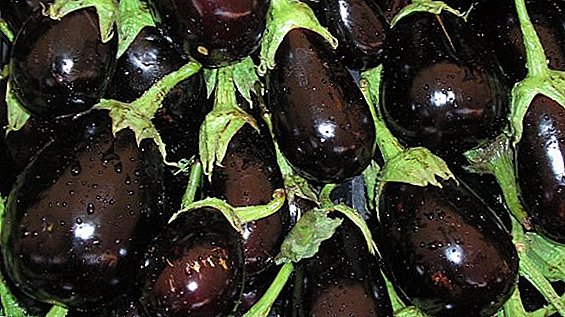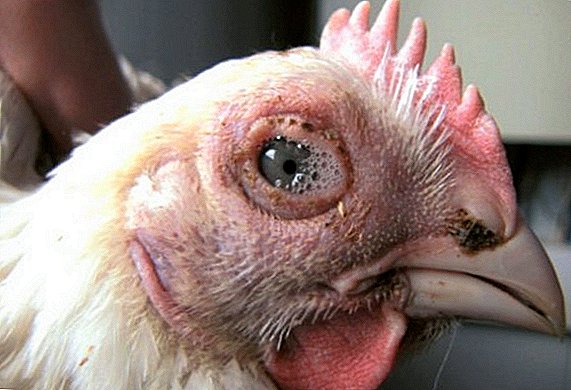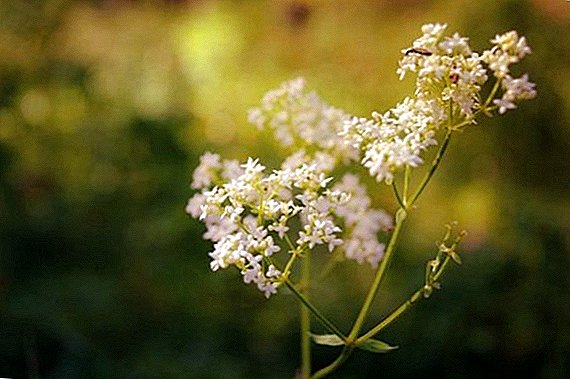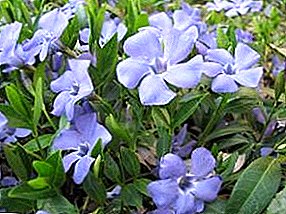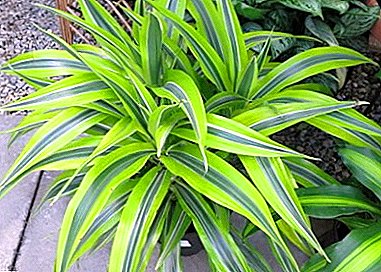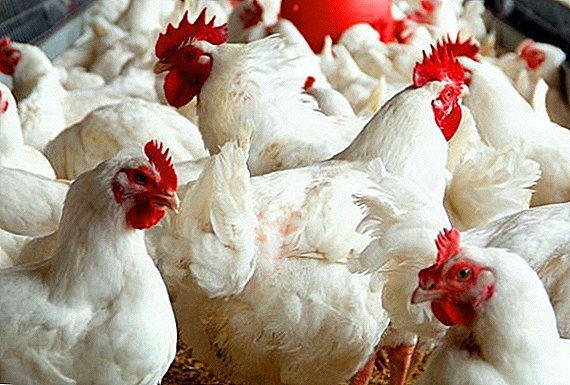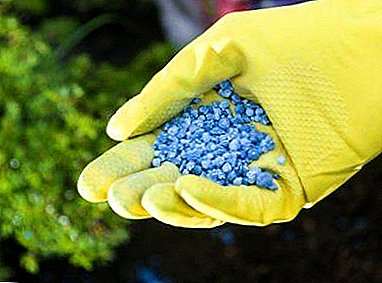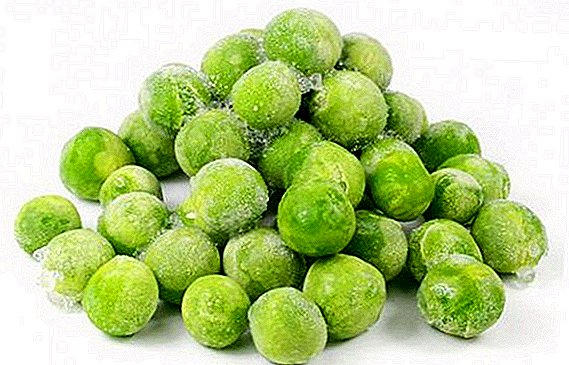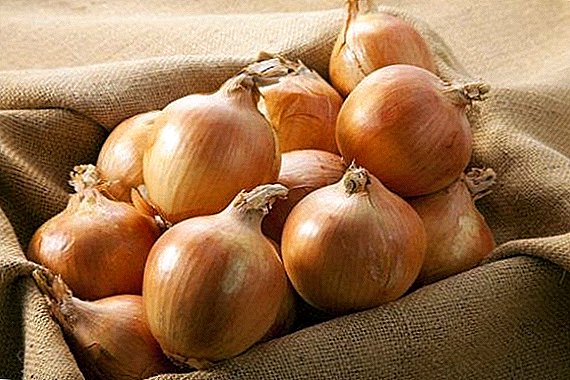 On the garden beds there is always a place for onions. It contains a lot of vitamins, macro-and microelements necessary for humans. Its beneficial properties are especially in demand in the winter and spring, when they help avoid vitamin deficiency and infections. The most popular varieties that can be harvested for the winter - such as the onion "Shetana", which has good keeping quality and high yield. Let us consider in more detail its varietal characteristics and cultivation agrotechnology.
On the garden beds there is always a place for onions. It contains a lot of vitamins, macro-and microelements necessary for humans. Its beneficial properties are especially in demand in the winter and spring, when they help avoid vitamin deficiency and infections. The most popular varieties that can be harvested for the winter - such as the onion "Shetana", which has good keeping quality and high yield. Let us consider in more detail its varietal characteristics and cultivation agrotechnology.
Variety description
Onion "Shetana" formed rounded onions with dry outer scales of straw color. The scales are medium in density and white in color. They are juicy and are on a shortened stem, which is called the Donets. They have a semi-sharp taste.
The long tubular leaves are colored green with a bluish tinge. In June or July, the plant throws out a hollow floral arrow up to 1.5 meters high, on which is located an umbrella inflorescence with many small flowers with long pedicels. The flowers are white, not more than 1 cm wide, with six petals and six stamens. Sometimes small onions are formed among them.  In August, the fruit-box ripens, in which there are small trihedral seeds in an amount of up to six.
In August, the fruit-box ripens, in which there are small trihedral seeds in an amount of up to six.
Learn about Chinese onion growing technology.
This culture is grown as a two-year or one-year. "Shetana" - varietal onions and can be grown to obtain seeds. Suitable for spring and winter crops.
The advantages of the onion "Shetana" are:
- high storage capacity - it can be saved without loss of taste until the next harvest and is well stored in the closet all winter;
- beautiful smooth bulbs;
- stable yield.
A feature of this variety is the ability to grow it in different areas. He shows himself well in the central and southern regions. It can be planted in the northern regions, but only by sevke.
Did you know? Since ancient times onions have been used not only in cooking, but also in medicine. The famous ancient Greek physician Hippocrates prescribed it to his patients with rheumatism, gout and obesity. Avicenna used onions to heal wounds and paid attention to his disinfectant properties.

Characteristics of onions and yield
This medium-hot variety of Czech onion has a medium early ripening. When it is grown from seeds, the onions mature in 88-98 days. Sowing onion sets reduces this period to 65-85 days. It is zoned in the Central and Middle Volga regions.
Under good conditions, in recommended areas, up to 5-6 kg of this vegetable can be harvested from each square meter of vegetable garden. Under optimal conditions, 90-92% of onions can be stored until spring.
From the seed grow larger bulbs - from 60 to 88 g. Bulbs grown from seeds have a mass of 44-46 g. The content of dry matter is about 12%, and sugars - not more than 6.5%.
Variety "Shetana" moderately resistant to diseases.
In the open ground, you can grow these types of onions: chives, shallots, leeks, slizun, batun.

Selection of planting material
Sevok and onion seeds "Shetana" best buy in specialized seed shops. When purchasing a sevka, consider the following:
- onions must have varietal characteristics - straw-colored husks and white flesh;
- they recommend sniffing onion sets - it should smell like onions, and if there is a smell of mold, it is better to refuse the purchase;
- planting material must be well dried and not have moisture - such a bow rustles when fingering;
- you should not buy this seed during frosts - the frozen sevus rots after thawing and will not be suitable for planting;
- It is not necessary to take onion sets with leafed leaves, if you are not going to plant it in the near future; it also should not have roots or cut sprouts;
- Bulbs with a diameter of 1-2 cm are considered the best planting material;
- There should be no stains, damage or suspicious plaque on the planting material.
If there is still a lot of time before planting, dry the seams and store them in tissue or paper bags at a temperature of 10-15 ° C and humidity of 70-75%. Onion planted before planting in the ground is stored in the refrigerator.
We recommend to get acquainted with the peculiarities of cultivation of other varieties of onions: "Sturon", "Exhibition", "Setton", "Red Baron".
 When buying onion seeds you need to pay for a shelf life. If it expires during planting, then no more than 30% of seeds will be able to ascend. It should also be noted that onion seeds lose their germination 3-4 years after harvest.
When buying onion seeds you need to pay for a shelf life. If it expires during planting, then no more than 30% of seeds will be able to ascend. It should also be noted that onion seeds lose their germination 3-4 years after harvest.
In 1 gram of onion seeds are 200-250 pieces.
Growing conditions
Onions like good lighting without shading, but they are quite cold-resistant cultures. Its seeds germinate at a temperature of 4-5 ° C, and the grown onions can tolerate sub-zero temperatures to -6-7 ° C. The optimum temperature for development is the range of 12-16 ° C.
Demanding on moisture - in the first 2/3 of the growing season should be watered. At the end of ripening a few weeks before harvesting, these irrigations should be minimized or canceled, because with full maturation it needs dried soil, otherwise the bulbs saturated with moisture will be stored worse.
Soil and fertilizer
For onions most suitable fertile light soil with a neutral reaction. The acidity of the earth should not be higher than 6.5. Acidic soils should be alkalized with dolomite flour (200 g per 1 sq. M) or ash (400 g per 1 sq. M). If you use lime for this, then this culture can be planted on such beds only after two years. 
The acidity of the soil significantly affects the yield of garden crops, so you should know how to determine it at home and how you can deoxidize the soil.
Do not make fresh manure for onions. Beds for it must be prepared in advance and then apply organic fertilizer. Therefore, it is best to use early potatoes, radishes, greens, cucumbers, under which fresh organic matter was introduced as crops preceding onions. You should not put onions again in the same place and after garlic. It can coexist with very different greens, except peas and sage.
Well-rotted manure and humus will improve the quality of the land for the bulbs. The use of mineral fertilizers with elements such as nitrogen, phosphorus and potassium will also be appropriate.
Growing from seed to seedlings at home
Seedlings of this onion can be obtained from seeds in a normal apartment.
Seed preparation
To grow onion "Shetana" from seed is cheaper than from sevka, but then have to try. Seed preparation begins in late March or early April. They are placed in a bag of gauze and placed in a warm solution of potassium permanganate for 45 minutes. For this, 1 g of potassium permanganate is diluted in 1 liter of liquid. Then the seeds are transferred to the “Appin” solution for 17 hours. Then a little dried to such a state that the seeds are scattered. 
Content and location
It is recommended to grow onions on window sills of windows facing south. Eastern and western windows are also suitable for this.
To obtain seedlings from onion seeds, you need to prepare special boxes with dimensions of 30x20x10 cm. Then they fill the substrate with a layer 8 cm thick. Land for planting should contain compost, peat, garden soil and sand in equal proportions. For the prevention of various diseases of the soil watered with a fungicide. Not bad, 14 days before planting, warm the prepared soil mixture in the microwave for 5 minutes or in the oven for 15 minutes at 200 ° C. This procedure disinfects the substrate and serves as prevention from various diseases.
You can purchase special cassettes for seedlings, which contain cells with a diameter of 2-3 cm. 3-4 cells of seeds can be planted in a cell.
Did you know? Almost half of all onions are grown by China (20.507 million tons in 2012) and India (13.272 million tons). In 2012, Russia ranked ninth in the production of this vegetable (1.536 million tons).
 Disinfect the substrate by heating in the oven.
Disinfect the substrate by heating in the oven.
Seed planting process
In the ground make grooves for placement of seeds. It is more convenient to take them not with your hands, but with the help of tweezers. The gap between the planting material should be 3 cm, and between the grooves - 5 cm. The seeding depth is about 1 cm. It is desirable not to get confused in the future, mark the rows with an inscription with the name of the variety and the day of planting. On top of the seeds sprinkled with earth about 1 cm and compacted soil.
Learn how to use onions in traditional medicine.
Sow well sprayed with a spray bottle to moisten and cover with film to retain moisture. Then the boxes or cassettes are placed in a warm place with an ambient temperature of 20-25 ° C. After 21 days, the first shoots begin to break through; after that, the seed container is moved to a cooler, but well-lit room. In order for the seedlings not to stretch and not be too thin, you can use additional lighting with lamps if the light is not bright enough. The temperature of the room should be maintained in the range of 16-20 ° C.
Seedling care
Watering is carried out as the drying of the upper part of the earth. For it is recommended to use separated water at room temperature. After 1-1.5 months, tare with seedlings is moved for hardening in outdoor conditions (on the balcony). This is done during the day, avoiding the bright sun.
It is necessary to produce at least two feeding seedlings with an interval of two weeks. At the same time, they take mineral fertilizers for a 10-liter bucket of water in the following proportions:
- 20 g of superphosphate;
- 5 g of calcium chloride;
- 10 g of urea.

Transplanting seedlings to ground
In May, seedlings are transplanted to the beds prepared in autumn. On the eve of planting make complex fertilizer. In the beds, furrows are made with a gap of 30 cm between them. Planting material is neatly separated and placed in a prepared groove with intervals of 5 cm from each other.
It is better to plant sprouts together with lumps of soil - this will reduce the likelihood of damage to the roots. Planting depth is about 1 cm. Roots are carefully placed in the soil and covered with soil from above, tamping the soil near each sprout.
Important! Strong deepen seedlings when planting is not worth it, because it can slow down the process of bulb formation and the maturation of the crop will occur later.
Immediately after planting, watering is carried out. Then the planted seedlings are mulched with peat.
Cultivation from sevka in open ground
It is much faster and easier to grow onions from sevka.
Site selection and soil preparation
Experienced gardeners recommend to adhere to the following rules when choosing a place to plant:
- the place for planting should be well lit by the sun - the lack of light causes a slowdown in the growth of the onion, impairs its taste properties;
- for planting it is better to choose the area on which legumes or solanaceous crops previously grew, under which manure was applied;
- it is not advisable to plant, if the predecessors were garlic, asparagus;
- A good option is to plant onions near carrots and peppers, as the tops of carrots scare away many insect pests;
- Prepare a garden bed in advance - remove excess acidity and fertilize with overheated organic matter and mineral fertilizers (20-30 g of superphosphate, 10-12 g of ammonium nitrate and 15 g of potassium salt per 1 sq. meter of land).
Important! It is necessary to choose the site taking into account that it does not have stagnation of water or close groundwater, as this will adversely affect the development of the bulbs - this can provoke a process of decay and the appearance of fungal diseases, as well as cause yellowing of the leaves.
Usually onions are grown in open ground, but this can be done in greenhouse conditions. In the greenhouse onions are grown for the forcing of greenery for sale year-round. The process of growing is almost the same as in ordinary beds. Before planting, the soil is well enriched with humus and complex mineral fertilizers, well mixed and leveled. In a heated greenhouse, they provide a temperature of 18–20 ° C in the daytime and 12–15 ° C in the nighttime. In winter, additional lighting is necessary to ensure that the light arrives for at least 12 hours.
VIDEO: Fine Things for Planting Onions-Sevka
Seed preparation
Before planting sevok sorted. Choose smooth, medium-sized onions without visible damage and signs of illness. They are heated for 2-3 days. For this, the bulbs are placed near the radiator. This is done so that in future no arrows will form on the bow.
Then the planting material is soaked in a solution with any mineral fertilizers, and then literally for one minute placed in a solution of copper sulfate for disinfection. This will protect the onions from the appearance of fungal diseases.
Seeding process in soil
Planting material is planted in the garden in late April or early May, when the ground is warm enough.
Planting can be done in the fall. Usually sevok planted 14-21 days before the onset of cold weather. During this period, the onions take root, but do not have time to germinate.  Onion planting scheme When planting maintain a distance of 10-12 cm between the onions. Planting material have even rows, and the recommended interval between rows is 20-25 cm.
Onion planting scheme When planting maintain a distance of 10-12 cm between the onions. Planting material have even rows, and the recommended interval between rows is 20-25 cm.
Watering
Watering is carried out about once every 14 days. When the bulb is formed, the beds are watered about once a week. During the summer heat it is necessary to water twice a week. With heavy rainfall stop watering - excessive moisture adversely affects this culture.
Important! Do not allow stagnation of water in the beds - this can trigger the process of rotting bulbs and the appearance of many diseases.
The optimal water temperature for irrigation is from 15 to 25 ° C. The best time is before noon.
Between the rows it is recommended to form grooves and pour water into them, then it will be possible to avoid erosion of the soil around the bulb. 3-4 weeks before harvesting, watering is stopped.
Soil loosening and weeding
 After planting onions, it is necessary to regularly loosen the soil - once every two weeks. During weeding it is necessary to clean the beds from weeds. All these procedures will contribute to faster growth and a good harvest.
After planting onions, it is necessary to regularly loosen the soil - once every two weeks. During weeding it is necessary to clean the beds from weeds. All these procedures will contribute to faster growth and a good harvest.
Top dressing
In the process of growing onions should be regularly do feeding.
- At the time of digging in the autumn it is necessary to make organic fertilizers in the form of cow dung or chicken manure.
- When the first shoots appear, it is recommended to apply organic fertilizers, which are pre-diluted in water.
- When the shoots reach a height of 15 cm, they conduct a second dressing, already mineral nitrogen-containing fertilizers.
- Potash supplements make at the time of increasing the mass of the bulb.
Pests, diseases and prevention
The onion "Shetana" is resistant to fusarium rot, but may be prone to peronosporoza, the second name of which is "downy mildew." Mealy dew is a fungal disease and very quickly affects the bulb. It is not easy to distinguish a damaged onion from a healthy one, so most of the crop may die. The disease is expressed in the form of a light bloom on the onion. At the onset of the disease, spots of yellowish color appear, and then spores of a violet-gray color are formed. The deposit is easily visible in the morning when dew forms.  Downy mildew. To prevent this trouble, recommend:
Downy mildew. To prevent this trouble, recommend:
- plant onions in a place well lit by the sun, where there was no fungal disease before;
- it is impossible to plant densely, it is necessary to form rows well;
- you need to collect the entire crop and be sure to dig up the land before the onset of frost;
- On the same spot onions can be planted only after 3 or 4 years.
If the onion is still contaminated with this disease, it is necessary to reduce watering and stop applying nitrogen-containing fertilizers, but potash and phosphorus-containing supplements can be continued. For spraying apply 1% Bordeaux liquid, as well as the drug "Polycarbacin". It should be noted that after this green feathers will become unsuitable for consumption as a food product, but the bulbs will be saved.
From folk remedies helps wood ash and whey, which is diluted with water.  Yellowing and lethargy onion feathers indicate the appearance of onion flies. This pest is especially active in the middle of a hot summer. The larvae of the flies gnaw through the passages in the bulb. Young onions because of this die, and larger and more mature strongly deformed. Damaged bulbs are dug out and destroyed, and the remaining ones are sprayed with insecticides such as "Aktara", "Lukhoed", "Medvetoks" and others.
Yellowing and lethargy onion feathers indicate the appearance of onion flies. This pest is especially active in the middle of a hot summer. The larvae of the flies gnaw through the passages in the bulb. Young onions because of this die, and larger and more mature strongly deformed. Damaged bulbs are dug out and destroyed, and the remaining ones are sprayed with insecticides such as "Aktara", "Lukhoed", "Medvetoks" and others.
Read also about other onion pests and how to control them.
Another pest for the bow can be a hidden trunk. This is an insect, the larvae of which eats away onion feathers from the inside. Symptoms of its activity are the appearance of whitish specks and stripes along the leaves, as well as yellowing at the ends of the feathers. Affected plants are removed and the planting is treated with insecticides.
Harvesting and storage
Bow "Shetana" has a good accuracy and with proper storage can hold out until the next harvest.
The signal for harvesting onions is lodging its leaves. Too perederzhivat it on the beds is not worth it, because the bulbs can take root and will not be suitable for long-term storage.
Onions are dug and dried in the open air under the sunlight. Then it is sorted out and rejected unsuccessful specimens, cut the leaves, leaving about 10 cm of the stem. Next, the enumerated vegetables are dried for several days at a temperature of 25-30 ° C and transported for further storage.
Learn how to properly store onions in the cellar and the apartment.
 The storage room for onion "Shetana" must be regularly aired, as well as to observe the temperature in the range from 0 ° C to 5 ° C. It can also be stored in room conditions, the main thing is to prevent temperature fluctuations. It is best to keep this vegetable in boxes of slats, or hanging in nets.
The storage room for onion "Shetana" must be regularly aired, as well as to observe the temperature in the range from 0 ° C to 5 ° C. It can also be stored in room conditions, the main thing is to prevent temperature fluctuations. It is best to keep this vegetable in boxes of slats, or hanging in nets.
Did you know? Onion contains vitamins A, B, C, essential oils and calcium. therefore him regular consumption serves to prevent colds and strengthens the immune system well. Onion juice is a natural antibiotic, which makes it especially useful for colds and inflammatory processes in the human body.
Possible problems and recommendations
Bow "Shetana" unpretentious in the care and it is easy to grow. But when it is grown there may be some problems. The main one is the manifestation of the yellowness of the leaves.
If the leaves turned yellow in July, then this is a natural process and no need to worry. It means that the bulb has increased its mass and soon it will be possible to harvest.  But if this process occurred much earlier, there may be the following reasons for this:
But if this process occurred much earlier, there may be the following reasons for this:
- Pests. For prevention it is necessary to loosen the soil and plant according to crop rotation. It is not bad for a carrot to grow nearby, as the smell of its tops drives away insect pests. It is also recommended early planting onions and careful cleaning of plant residues. For the prevention of well helps in the soil wood ash.
- Lack of nitrogen in the soil. In order to eliminate it, nitrogen-containing fertilizers should be applied to the soil. But it should be noted that for the assimilation of nitrogen, watering is necessary, and in the presence of strong showers, the nitrogen compounds sink to a decent depth and the onion root system cannot assimilate them.
- Lack of moisture. You need to make sure that the earth does not dry out. In the heat it is necessary to water more often.
Gardeners recommend the following ways to solve some problems when growing onions:
- Yellowing leaves can be removed by preparing the following solution - take half a glass of salt, 1 ampoule of ammonia, 3 handfuls of ash and dissolve in 10 liters of liquid. This solution is watered every 10 days until the yellowness disappears and the feathers turn green.
- Seeds are soaked before planting in a strong solution of manganese and planted in the beds, previously sprinkled with salt.
- For the prevention of parasites prepare such a solution - 0.5 tbsp. spoons of iodine, 0.5 kg of soda, 2 bags of manganese and diluted in 5 liters of liquid. The resulting concentrated solution is diluted with water 1 to 10 and they are watered.
- To scare away natural pests, it is necessary to mix sand with moth balls and sprinkle them between rows.
- Water the planting solution of potassium permanganate with added salt.
 Sometimes onions appear excessive bitterness. To eliminate it, you need to follow these recommendations:
Sometimes onions appear excessive bitterness. To eliminate it, you need to follow these recommendations:
- Watering should be sufficient. With a lack of moisture, the dry matter content rises and onions begin to taste bitter.
- It is necessary to make the feeding in time to taste was balanced. It is especially important to introduce phosphate fertilizers in a timely manner.
Onion "Shetana" is a high-yielding variety, especially in the recommended regions for it. Its semi-sharp taste, good keeping quality and resistance to diseases are well demanded by the population. If you follow all the rules and recommendations, then the process of growing onion "Shetana" is not difficult, and this vegetable will give you a generous harvest.


